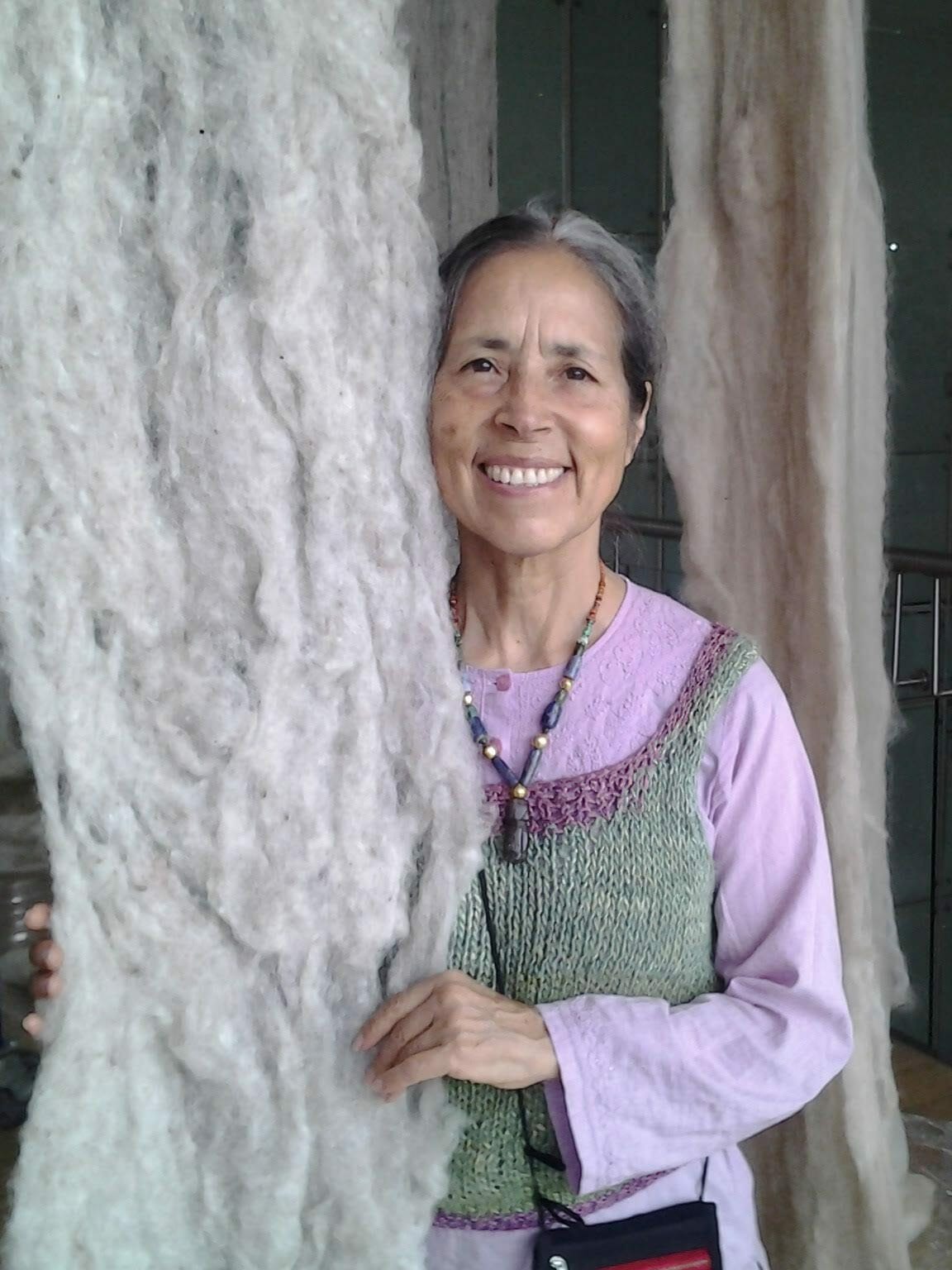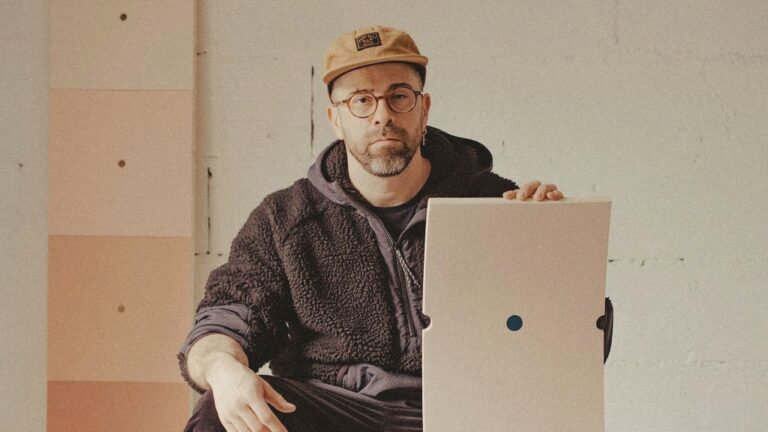
How To Manage Your Contacts as an Artist
Tutorial & Template

At a very young age, Cecilia Vicuña felt the urge to create, while simultaneously, she felt the need to stay connected to the natural environment and indigenous beliefs. Vicuña decided to leave her native Chile in 1972 due to the unstable political situation caused by the emerging military dictatorship of Augusto Pinochet. She left Chile for London, where she finished her studies. From there, she went to Columbia to finally settle in New York, where she lives and works today.
Vicuña’s artistic practice is a multidisciplinary one that spans from painting to performance to material practices. Despite her not living in her native country, Vicuña remains involved in the political, environmental, and social aspects of Chile. She is a vocal activist using her art to protest or raise awareness. Cecilia Vicuña is predominantly known for her monumental textile installations made of unspun wool inspired by quipu(s)—a knotted information system used by the Inca and pre-Inca civilizations.
Quipu or khipu is a knotted record-keeping system made entirely from wool. Quipus were used by the Inkas and earlier ancient Andean civilizations as a type of alphabet. Instead of letters, the people used knots to mark data, military organization, and calendar information, but also stories and historical narratives. The tradition of quipus was banned during the colonization period of South America. The people who continued to produce khipus were often killed or tortured, preventing the tradition from being passed on to the next generations. The tradition continued to fade out. In the 1970s, when a wave of military dictatorships took over South America, fascist ideologies contributed to the erasure of cultural traditions, such as the tradition of quipus.
The knowledge of ancient indigenous traditions such as khipu was not taught at schools, nor was it shown in museums as a historically and nationally important tradition. For this reason, the majority of society was unaware of its significance. It was in the house of her aunt, in one of her foreign books, where Vicuña encountered some information about quipu for the first time. From the moment she saw an image of a quipu, she kept on thinking about it. Soon after this experience, she created her first Quipu, which she entitled A quipu that remembers nothing. As unclear as it might seem, the vagueness of the name of the work is purposeful. A quipu remembers nothing because its history had been intentionally erased during the colonization of the Americas.
Since 1966, Cecilia Vicuña has pursued a Conceptual artistic practice where she combines weaving, language, sound, and ancient indigenous technologies. Vicuña’s Quipus are not an exact copy of the ancient knotted record-keeping devices. The artist reinterprets the form into one of various colors and sizes, and that frequently relates to the cultural context of the site of the exhibition in question.
Growing up, the artist felt that the natural environment communicates to her through animals, but also wind, water, or the sun. For Vicuña, any object, be it an artwork in its final stage or just a material, is never just an object. For the artist, an object acts as a witness of a relationship between people and the environment or between past and present. Through her art, Vicuña evokes Quechuan cosmology, where her art objects are responsive to—or an initiation of—a relationship with all of the living, the non-living beings, and the cosmos. The importance of the past, the present, the physical, and the natural environment, Vicuña ’weaves into’ the threads of her Quipu textiles. Weaving becomes a symbolic act that connects different temporal and spatial dimensions, which are all united in the woolen threads of her Quipu installations.









The monumentality of Vicuña’s Quipus can also be read as a metaphor for the natural environment that, for the artist, is intertwined with women’s rights. The artist perceives both nature and femininity as an equally strong force, yet one simultaneously targeted by oppressive hetero-patriarchal systems. For Vicuña, this parallel means that in the times of neoliberal governments, both women and nature are similarly vulnerable to politics of extraction. In her fabric-based works, colors are a crucial element in explaining to the visitors the meanings of her textiles. Although ’reading’ her Quipu installations in terms of color symbolism can be reductive of their poetic message, the colors can act as a guide in the multilayeredness of the artwork. For instance, the crimson red used in works such as Quipu Womb evokes associations with menstrual blood and female reproductive organs. Metaphorical blood finds its way into a conversation between environmental destruction and gender injustice.
Poetry is another important thread of Quipus. A thread that is rather immaterial or invisible, but the artist herself definitely feel its presence. Vicuña describes her Quipu installations as monumental ”poems in space,” which by now are reminiscent of a cultural tradition that only a few in this world can decipher. I personally see them, sometimes reaching up to twenty meters of textiles, as monuments to all people, languages, and material forms of communication that have been lost to colonial politics. The unspun character of wollen threads in a poetic way gives the work its ephemerality. This impermanence of the art object, it refers to ancestral and indigenous traditions which are frequently marginalized by authorities. Vicuña’s poetic and open-to-interpretation textiles raise awareness among the public while being an artistic protest against cultural erasure.
Precario or precarious is another important term in Vicuña’s artistic practice. At the age of eighteen, she created her first precario—an installation composed of debris and small neglected objects she found walking on the beach nearby her house. Her interest in this art form deepened due to the temporal nature of the found pieces, the fragility of their state as well as their survival depending on the environment. The term precario evokes a meaning that is two-fold in her artistic practice. First and foremost, it is associated with the fragile physical condition of her installations. Secondly, precarious refers to the precarious economic state of countries impacted by years of political instability.
Throughout this article, I focused predominantly on Vicuña’s fabric-based works, yet her written poems, paintings, films, and performances deserve just as much attention. Since the 1973 military dictatorship in Chile, Vicuña has been vocal about her disapproval of destructive policies directed against indigenous people, their native land, and the entire planet. Similarly, the artist expresses her disapproval of rigid art historical canon traditions in both her figurative and abstract paintings. Just as in her textile installations, wollen fabric is a crucial character for her performances. Vicuña treats it as a living being or one that comes alive through a collective ritual. Fostering of collectivity is important in the artistic practice of Cecilia Vicuña because it makes the spectators more connected to themselves and their surroundings. Above all, united, we can achieve much more than alone.
Her artworks move in a neo-conceptual spectrum of art and in the past ten years are gaining the visibility it should have gained long ago. Her Quipu installations have been exhibited in art museums and galleries worldwide. As a result, she received the Golden Lion for Lifetime Achievement at the Venice Biennale in Italy in 2022, after also receiving the Premio Velázquez de Artes Plásticas in Madrid, Spain; the Herb Alpert Award in the Arts in Santa Monica, the United States of America; the Anonymous Was a Woman Award in New York, the United States of America; and The Andy Warhol Foundation Award, also in New York, the United States of America.
Recent notable solo presentations include institutional shows at the Museo Nacional de Bellas Artes in Santiago, Chile; the Boulder Museum of Contemporary Art in Colorado, the United States of America; the Contemporary Arts Center in Buffalo, the United States of America; the Diverse Works Artspace in Houston, Texas, the United States of America; the Center for Contemporary Arts in Santa Fe, the United States of America, the Fundacion Gilberto Alzata Avendano in Bogota, Colombia; and the Institute for Contemporary Arts in London; the United Kingdom.
Last Updated on May 23, 2023

Tutorial & Template

A Studio Visit During the La BIBI Residency